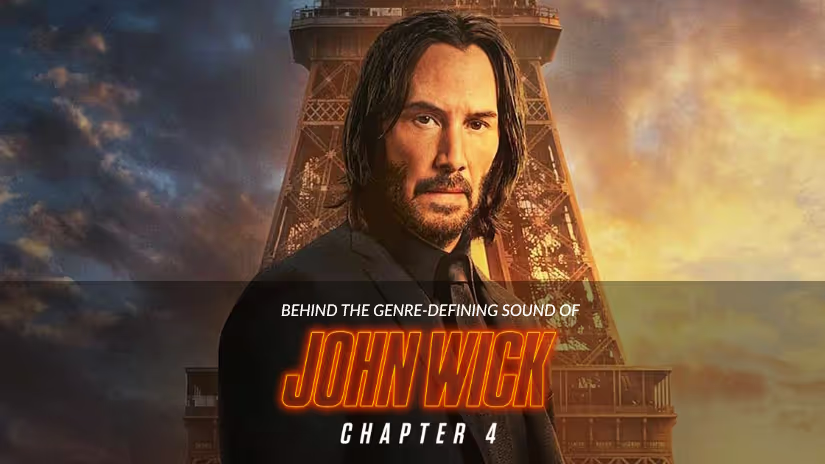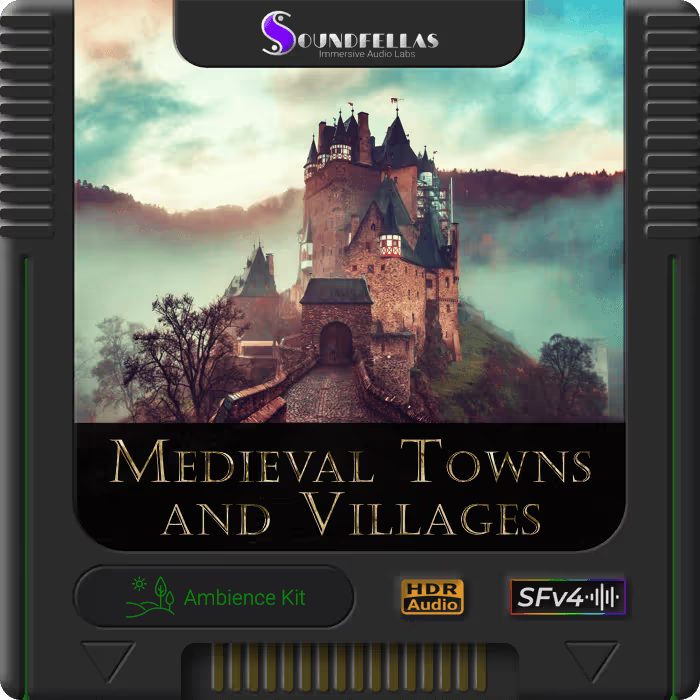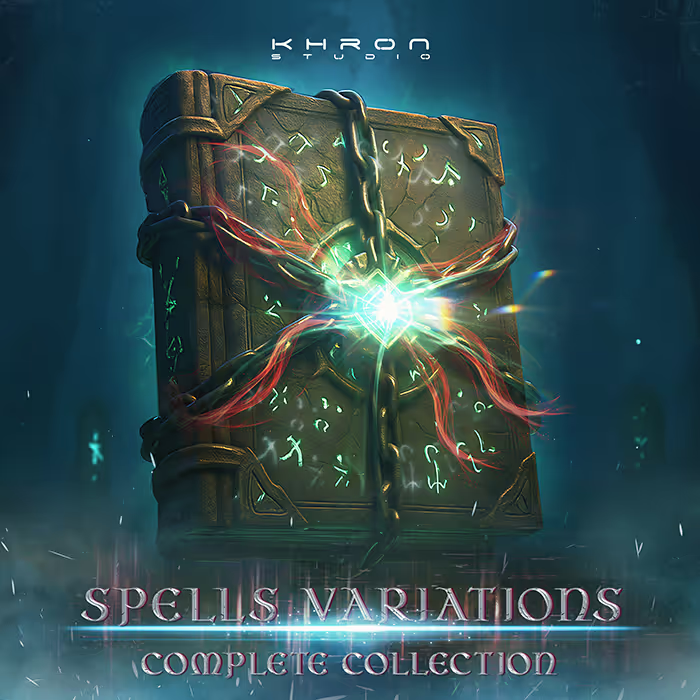The John Wick films are the benchmark against which all other assassin-packed action films are measured (at least in my humble opinion). And somehow, the film series has managed to outdo itself with each new release, with bigger set pieces, even more fluid fight choreography, tougher stunts, and clever combat scenarios.
MPSE Award-winners supervising sound editor Mark P. Stoeckinger and sound designer Alan Rankin at Formosa Group have been staples of the film series’ sound. They’ve been there from the first frame to the last, making sure each gunshot sounds powerful, punchy, and precise, that each fight move feels exact and each blow feels bruising, and that every location is sonically immersive and unique.
Here, they talk about what it took to whip John Wick 4 into sonic shape, how they work as much of the production tracks (including breaths and efforts, fight vocalizations, and stunt falls) into the final sound, how they create those incredible gun sounds, how they approached the sound of the major set pieces such as the car sequence at the Arc de Triomphe, the kitchen fight scene, the glass panel room shootout at the Osaka Continental, the last duel at the Sacré-Coeur Basilica, and so much more!
WARNING: This interview *MAY CONTAIN SPOILERS*
John Wick: Chapter 4 (2023) Final Trailer
You’ve been working on the John Wick films since the start! What’s something new you wanted to bring to the table for JW4 in terms of sound?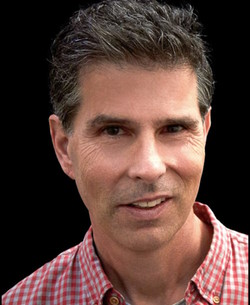
Mark P. Stoeckinger (MS): The sound of John Wick always evolves, really. It always gets clearer, and more articulate. If you listen to the first film versus the fourth, you might be able to pick up on some of that.
Alan [Rankin] is always coming up with new ideas for how to make guns clean, tight, and dramatic. That seems kind of obvious, but it’s never all that straightforward. In an action film, it’s easy to inadvertently make a wall of noise and John Wick is not that at all. Let’s say that someone is shooting a gun over and over again. It’s not like you just put in a bunch of gunshot sounds. As a matter of fact, the tail of the first sound has to be cut off clean for the next one to have the same sharp attack, which might only be a few frames. But if you don’t do it that way, it gets all muddy and mushy; you don’t get detail and transients with the second, third, or fourth subsequent shots.
Alan Rankin (AR): You have to be able to differentiate between four different people shooting. We try to make the gunshots actually stick out and be very identifiable. You always know which gun is John’s. Even if he’s shooting in the background, you always know which one is his, because he has a very distinct sound to his weapons.
That was the hardest part of doing this one. There are so many gunshots and so many impacts and residual sounds from the gunshots. So what we tried to bring to this one, as Mark says, was to try to make everything a lot cleaner and a lot more defined and easy to identify who is shooting.
MS: John picks up some different guns throughout the film. Because there are so many elements that make up the sound of a gunshot, we can alter it to change the characteristic a little bit when it’s a gun that John is using.
John Wick: Chapter 4 (2023) Special Feature ‘New Challenges’ – Keanu Reeves, Donnie Yen
Where do you get your gun sounds? Did you do recording sessions and/or field recordings of gunshots and ricochets?
MS: We didn’t do gun recording sessions for this film because we’ve done it so many times before. Also, you’re never using the actual sound of a given gun. You’re just combining elements that sound good for a given weapon.
AR: There are times when I am using elements of the actual gun that is being used, but it’s almost never just that gun because I’m searching for a low-frequency element that the gun recording doesn’t deliver. So I look for something else that will deliver that aspect of the sound.
…the best approach was to find what worked element-wise rather than being realistic about it.
It’s really hard to put those all together just based on actual field recordings. In this case – and I think that Mark agrees – the best approach was to find what worked element-wise rather than being realistic about it.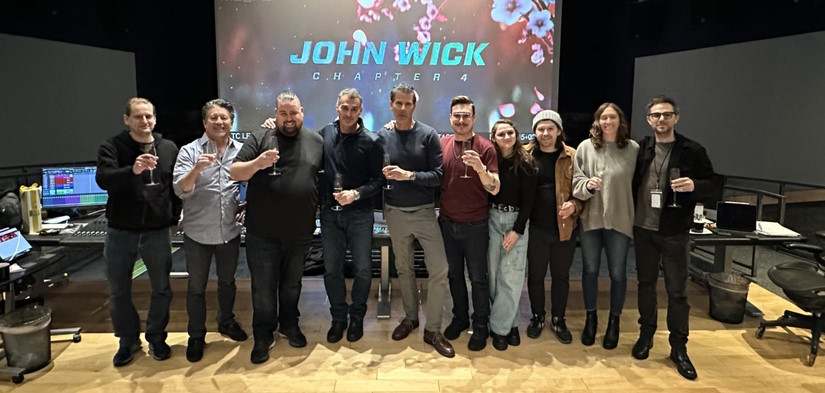
MS: On JW3, the director introduced us to Taran Butler, the tactical shooting expert who trains all the actors to shoot. When you shoot with him, you really hear things in a unique way. I have shot guns before and recorded a lot of guns, honestly. But there’s a certain aspect of paying attention to it in the environment that is a little bit more John Wick-esque.
Keanu and all the actors in the movie were there at some point shooting real guns in this run-and-shoot scenario. You just learn a lot about the dynamics; you hear different and interesting sounds.
John Wick’s guns sound as close to real as you realistically can do in a movie environment.
One thing about the guns in John Wick, as opposed to most other action films I’ve had a chance to work on, is John Wick‘s guns sound as close to real as you realistically can do in a movie environment. That’s hugely important and it’s one of the reasons that people pay attention to it.
AR: It’s a feel thing. When you’re close to the gun, you want to feel the power of the gun, but when you’re far away from the gun, you want it to feel like it’s in the environment. If it’s distant and you want it to sound distant, you don’t want it to sound the same as it did close-up just lower in volume.
So you use different elements of the recordings or different elements of the sound design material to make it feel like the gun is actually present in the space that it’s supposed to be in. It’s supposed to be distant. It’s supposed to be around the corner or in another room. It’s supposed to be up close to your face. There are just so many scenarios and that’s why we have to create layers for the gunshots so I can dip and choose which elements I want to play at any one time.
…we found that if we advanced the LFE element ever so slightly…it lines up a little better and it makes it feel like the sub is not a separate element.
To make the close-up gun sounds feel punchy, we use a simple technique. A lot of these gunshots have an LFE element, and we found that if we advanced the LFE element ever so slightly before any other element in that gunshot, it lines up a little better and it makes it feel like the sub is not a separate element. It seems to line up a little tighter and make it feel like it’s an integral part of the shot versus being a little flavor of it.
The LFE element is also a very short sound; it just needs to whack the subwoofer. It doesn’t need to be this big boomy sound.
MS: We’re using physics to our advantage.
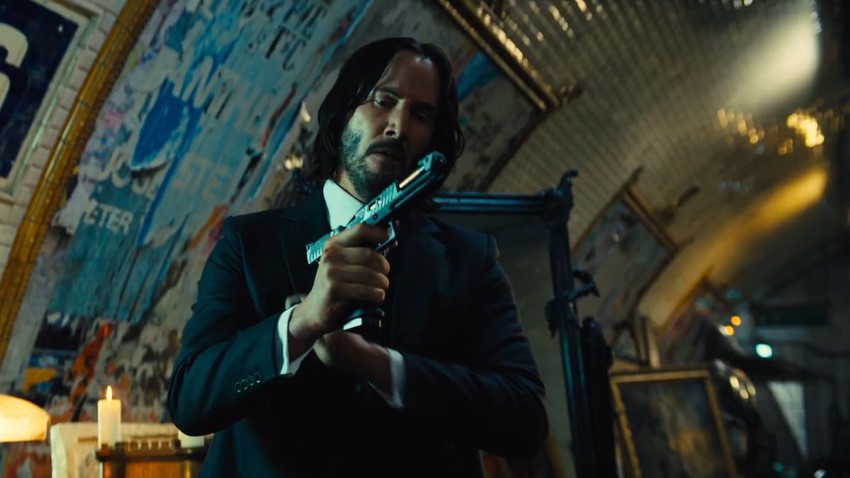
Another great aspect of your sound work on the John Wick films is the bullet ricochets. They all sound unique, and never feel ‘copy and paste.’ Each one has its own personality…
AR: Mark is a stickler about that actually, as far as making sure that it’s not just “pow ping” and “ping pong” over, and over, and over. We’ve been lucky enough to work with some really great guys as far as their approach to designing ricos and designing impacts. We’ve learned an awful lot about how to make them so that they’re a little distinct and don’t sound sing-songy all the time.
We design the impacts to help sell the fact that bullets are going by or they’ve hit something and are bouncing back…
That’s actually a little difficult to accomplish. Not every shot has a ricochet. We design the impacts to help sell the fact that bullets are going by or they’ve hit something and are bouncing back into the rear speakers or are bouncing around in the front speakers or something like that.
I concentrated more on delivering impacts, so the bullets sound like they were hitting specific surfaces, and then we added the ricos as little flavorings. They helped sell the fact that this is dangerous and you don’t want to be around this.
The arrow has to go somewhere, and we don’t ignore that.
MS: The director Chad Stahelski is really into cause and effect all the time. So if somebody shoots towards the character and misses, typically the bullet will hit right behind the character and then it might even rico.
In JW4, they shoot arrows, and it’s the same sort of thing. The arrow has to go somewhere, and we don’t ignore that. That’s really, really important to all of us, and particularly to Chad. He stages things in such a way that those sounds get to play. He likes it. He stages it that way and we get to go there with the sounds that go in the movie. So all in all, everybody’s working towards the same goal.
John Wick: Chapter 4 Movie Clip – Arc de Triomphe (2023)
The John Wick films are more than just shootouts. They feature incredible hand-to-hand fights and incorporate knives, axes, swords, arrows, and other interesting props like pencils and even horses. Did you do any recording sessions for those for JW4?
MS: While working on Kill Bill, I had been so excited about recording Samurai swords, but then I found out that they don’t sound at all like you want them to sound. They don’t have that ‘movie sound.’
…you have to go out and record materials to get the elements you need to make something sound the way you want it to.
Generally speaking, when creating movie sound, we ask, “What does it need to be? What do we want it to sound like? Do I have a palette of cool sounds that I can manipulate to make it sound that way?” If not, then you have to go out and record materials to get the elements you need to make something sound the way you want it to.
It would be nice to record everything but since you’re not using the real sound of an object – the actual gun or the real sword – you’re just making it all up. If you’ve got elements to help you make it all up then you don’t need to go out and record.
AR: You have to think about the differences in how things should sound. For example, a katana (like the ones used in John Wick 4) should sound lighter than a large medieval broad sword, which is very big and very heavy. They have a certain tonality when they hit. They have a certain tonality when you swing them. A katana will have a much higher frequency range as far as the swish through the air and their impact sound.
You have to figure out what the characteristics of that sounds should be and how to make that happen using a combination of different elements.
But if you were to record an actual katana, it sounds nothing like what you want to hear in a movie. You have to figure out what the characteristics of that sounds should be and how to make that happen using a combination of different elements. I do a lot of filtering and pitch-shifting to get the right weight of a weapon.
As far as individual elements, we have recorded so many things over the years that our effects library is pretty vast. Mark and I alone have done so many movies and we have recorded a lot of sounds and that has increased the palette of sounds that we have available.
Time is also a factor. These schedules are extremely short. It’s hard to find the time and the money to go out and record everything.
MS: One thing that was recorded for JW4 was the cars for the Arc de Triomphe sequence. During production, we saw some of the dailies and I asked the production sound team to record the ’71 Barracuda and some other ancillary cars that we see in the film.
Ultimately, the Barracuda in the film ended up being a combination of three different cars, none of which were a Mopar engine.
The way things typically get recorded on the set and the way we record sound effects are a bit different. For sound effects, you’re going for performance and visceral value, whereas in recording on set, you’re mastering something that’s happening. So it’s more of a safe recording than we tend to do. We might have a little distortion here or there, or some things that just go wrong in a good way to just help the performance.
Ultimately, the Barracuda in the film ended up being a combination of three different cars, none of which were a Mopar engine.
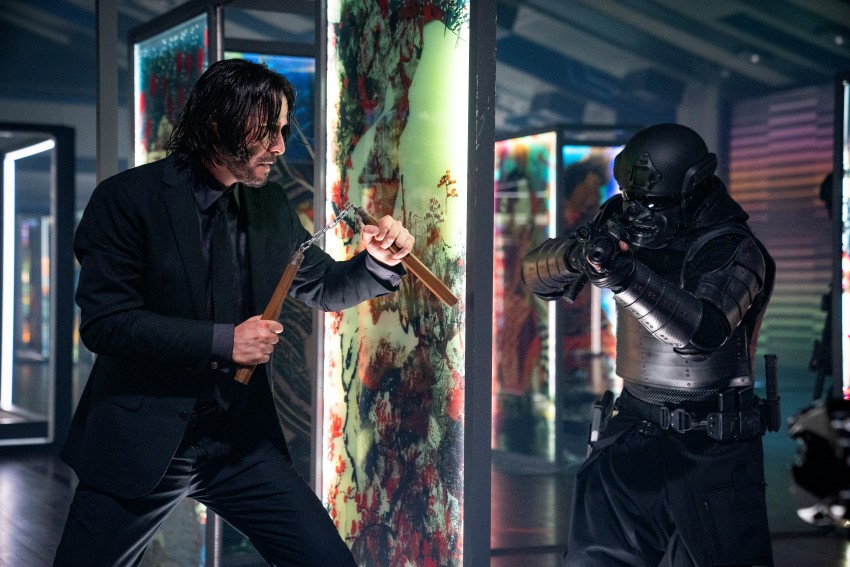
What about materials that end up getting destroyed – there’s a lot of shatterproof glass in the Osaka Continental fight! Did you do glass break recording sessions? Concrete? Wood?
MS: Foley does the “after debris” part of it. So, in that glass sequence, when the characters are walking or crawling on the broken glass, that’s foley. The rest of it is sound effects sourced from previous recordings. Alan did all of that.
AR: There were a few little things that we wanted them to do as well, like some of the impacts on some of the frames around the glass since it’s so specific.
The visual effects of the falling debris completely changed all the way up to the final…it really changed from what seemed like plate glass to safety glass, and those two things sound completely different.
A lot of the glasswork was done as sound effects. The visual effects of the falling debris completely changed all the way up to the final. From about two weeks before we actually finished in editorial up to the final mix, it was a different visual effect every time. So it was very hard to dial in because it really changed from what seemed like plate glass to safety glass, and those two things sound completely different. So we had to be prepared to call up some sounds that worked for either scenario, to be able to just plug it in as best as we could.
MS: Everything that breaks in the movie is a visual effect for the safety of the actors. As a matter of fact, there was one shot that was pretty darn cool that they ended up cutting out because the director was never happy with how it looked on screen. So when you’re working on it, you can kind of imagine what’s going to happen, but sometimes you don’t see what’s going to happen.
…as you can imagine, all those bullet hits were VFX.
I think glass (and water) is really tough to create visual effects-wise. And so it came in at the very end and there were last-minute adjustments to make it feel right. And as you can imagine, all those bullet hits were VFX. There might have been a couple of practical ones when we were outside on cement where they could put squibs, but anything glass was added in — I’d say 90% of them were added.
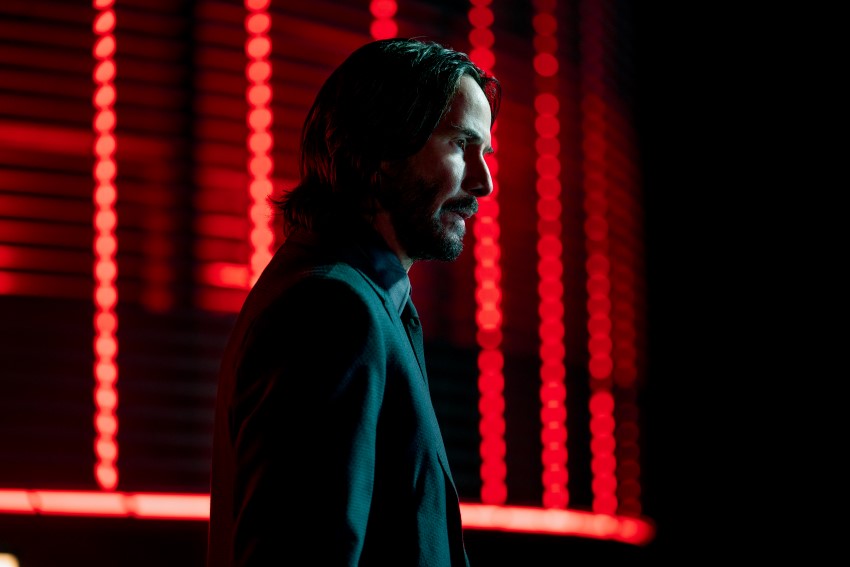
I read that Keanu Reeves had less than 400 words in JW4! In terms of vocals, the fight sequences are predominately breaths and efforts. Can you talk about editing in the breaths/efforts? And the ADR sessions?
MS: It’s the goal to use production all the time, even if it’s not the greatest recording. We had some pretty amazing dialogue editors on this movie. You’d have a fight scene with weird hits or some squibs and other crazy stuff, but when the dialogue editors were finished, you would never know any of that was in the scene.
It’s the goal to use production all the time, even if it’s not the greatest recording.
And so in the process, we were able to maintain all the efforts and fight efforts from the set. Chad has rehearsed so many of the fight scenes with stunt people that he’s worked with before, and part of the choreography and the vocals that you hear tends to be the fight performers indicating what they’re going to do or calling things out for timing on the set.
The end result is always so good because they rehearse that. We leave it in because it feels like part of the energy of the scene. So throughout all the John Wick movies, we’ve leaned heavily on production, even stealing things from other scenes or doing whatever it takes. Sometimes the dialogue editors will listen through the dailies and pick all the parts that work and then cut it like a sound effect.
…part of the choreography and the vocals that you hear tends to be the fight performers indicating what they’re going to do or calling things out for timing on the set.
We did have some pretty big group ADR sessions on this movie, and one of them we were able to record at this house in the Hollywood Hills that has this really great mixing stage. The whole outside gardens and outdoor areas were turned into a big mixing stage, like a big ADR studio.
So the actors would come in and perform the scenes we were working on, and as soon as we got the performance right, we’d move to these ADR stations set up outside, with a TV and all the recording equipment. The ADR recordist would cue the take and the performers would reprise what they just did inside. And those are the sounds that we were able to pepper in and integrate into the production. So it sounded really seamless.
Keanu didn’t have a lot of dialogue in the film, so there are maybe seven ADR loops in the entire movie and probably less of him.
On the mix side, Andy Koyama (who mixed the film’s dialogue and music at Formosa) is just a magician when it comes to maintaining and saving challenging production.
The effort sounds are an important aspect of the John Wick movies, so thanks for asking that question because it never always gets its due.
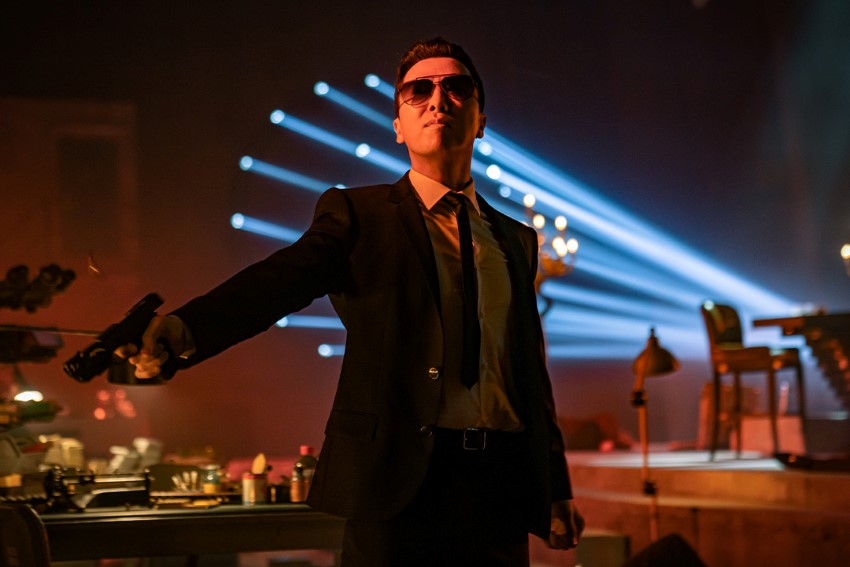
The John Wick films have THE BEST fight sequences of any action movies I’ve ever seen! They’re always so inventive. So let’s talk about the awesome sound work for these fights:
Caine uses those doorbell sensors to show where his enemies are in the kitchen fight scene – hearing the location of those “ding-dong” sounds in the space was super important. Can you talk about some of your challenges in designing that fight sequence?
MS: There is a multi-point answer to that question. First of all, the picture department on this movie was really into sound. We were able to supply and/or make all sorts of sounds for them to edit and put in the movie. That really establishes the sonic palette and they could work the cut with these sounds. Of course, we get an opportunity to elaborate on those sounds and change things if necessary. So, that’s how some of these ideas came to be.
We were able to supply and/or make all sorts of sounds for [the picture department] to edit and put in the movie.
For the “ding-dong” sound itself, we could have done something really high-tech, In fact, one of the effects editors had made some really cool sounds for that, but the “ding-dong” is funny and that’s part of the scene. We had to go with that because it’s just part of what the movie is all about.
AR: It gives a little comic relief. You need a tiny, little bit of that because it’s nothing but carnage the rest of the way.
MS: There is all sorts of great comic relief written into the movie, and if sound can contribute to it, all the better.
There were so many bullet hits added after the fact, throughout the process, and it all had to sound really clean
The sonic challenges are obviously trying to make these big action sequences good.
There were three scenes that had the biggest sonic challenges: the fight in the room with the glass panels, the Arc de Triomphe scene was a huge challenge because it is nonstop sound and nonstop techno music, and then the sequence that we call “the top shot,” where the camera comes overhead and looks at all the rooms. That whole sequence is all Alan’s, from the time Wick runs into the building, all the way through the shootout on the stairs. That obviously took a lot of work. There were so many bullet hits added after the fact, throughout the process, and it all had to sound really clean.
AR: Chad was very specific about that scene on the stairwell up to the Sacré-Coeur Basilica. All the assailants have silencers on their pistols. If you look really closely, you’ll notice the silencers, but Chad didn’t want it to sound just “pew, pew, pew.” A real silenced pistol actually has a ping sound. So, I did a combination of both a silenced pistol and an unsilenced one to make it more impactful, but it didn’t have a big old ring off, not like John’s gun does. John’s gun rings off all the buildings, and you hear all the reverb and echoes.
…I did a combination of both a silenced pistol and an unsilenced one to make it more impactful…
The challenge was that there are so many of them, and there are so many impacts, so how do you make those stand out? We made everything that’s in front of you stand out and everything else has the correct POV. So the guys firing from a distance sound like they’re firing from a distance, but the action that’s happening in front of you, that you’re concentrated on, has the biggest and the loudest sounds. And again, there are so many bullet impacts!
There’s also the dragon’s breath shotgun. That had to stand out. There’s actually a vocal element going on in there. It’s not overt, but there is a vocal in there to help differentiate the dragon’s breath shells from the normal ones. It was fun to be able to design that gun.
…there is a vocal in there to help differentiate the dragon’s breath shells from the normal ones.
We had sent that off to the picture editing team a long time ago and they put it in their Avid and it lived that way. They liked it. And when it got to the stage, we really expanded the whole palette. It was the sounds that were in there from before, but bigger and cooler.
There’s an advantage to sending sounds to the picture editors, and we do that a lot actually. The editors cut in these sounds on multiple tracks, and at the end, we just get a mixed-down two-track from their Avid. It’s not a bunch of individual sounds that they had started out with. So, there are no surprises on the dub stage. We just finesse everything and make everything work with the music and the new VFX.
There’s an advantage to sending sounds to the picture editors, and we do that a lot actually.
MS: That works great, especially when you have a picture department that’s also really into the sound. It obviously could be dangerous if you have something that sounds particularly interesting and if it doesn’t get presented well in that environment, then it could get thrown out or have some unfortunate notes.
But when you have everybody pedaling in the same direction, it really helps. And we were fortunate to have a pretty awesome picture team. The picture editor and the two assistants (who did a lot of sound effects work, music work, even noise reduction on the dialogue, and all sorts of things) just really helped evolve that track.
John Wick: Chapter 4 – Official Clip (2023) Keanu Reeves, Donnie Yen, Scott Adkins
Let’s talk about the fight with Killa (the big guy with gold teeth in the purple suit) in the nightclub that had those indoor waterfalls! What were some opportunities to have fun with sound for that scene?
MS: Well, one of the main opportunities really starts with the music. The music really drove that sequence and it had a lot of filter sweeps. It was probably the most non-literal sequence in the entire movie. The way that Andy mixed the techno music, which typically has no frequencies left for anything else, was just amazing. To make this fight scene possible, he kept the music out of the center channel because the fights – 90% of the time – are in the center of the screen. So that helped to get all the sounds that were made for that sequence to play.
If you were to strip out the music, you would hear that the waterfalls, which visually are everywhere, are not heard all the time.
If you were to strip out the music, you would hear that the waterfalls, which visually are everywhere, are not heard all the time. Most of the waterfall sounds were made with waves and water swishes processed with filter sweeps. So nothing is steady or constant. We might filter out all the high frequencies and then filter some in as we go by a waterfall or something like that, so it always had movement. Nothing ever sat static.
Most of the waterfall sounds were made with waves and water swishes processed with filter sweeps.
That goes for the crowds, too. A lot of the time we took the crowds out or actually didn’t even cut them in, quite frankly. Even their reactions had movement. Anything that added movement seemed to be the solution for that scene. The concept of the music had been around for a long time and was the basis to work sounds against, so we knew what was going to work and what wasn’t going to work.
There are a couple of different levels of fights in that sequence. I remember when we were playing that back, Casey Genton (effects re-recording mixer) and I looked at each other at the exact same time, thinking, “Let’s just take the punches from the beginning of the movie and put them in during the slow motion fight here.” It’s way over the top. It’s like an homage to earlier in the film that only we sound nerds will probably get.
There are also filtered moments where the music might go out and or the punches get filtered down but your ears work really well when sounds are not steady, and the whole goal was to not make anything too constant.
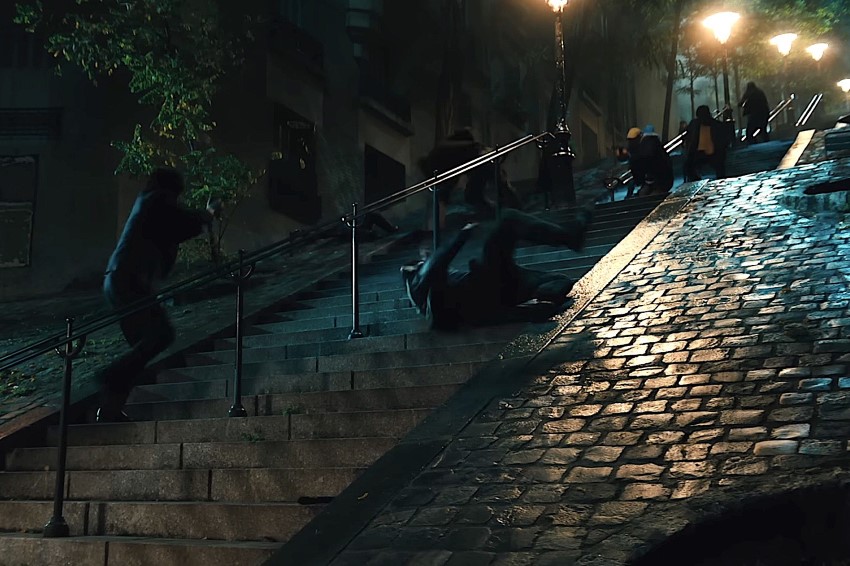
Looking at the fight up the stairs to the Sacré-Coeur, there are 222 steps and Wick falls down every single one! It’s great because each impact feels unique. Can you talk about creating the sound for those physical stunts in that scene?
AR: Those actual physical stunts are pretty amazing – just some of the ways some of the bodies get thrown around. There’s one in particular where John is thrown up against a pole and then he tumbles down the steps. That’s an actual stunt. It’s amazing how well they articulate all that stuff.
…every time he physically hits a surface there’s an accent. It’s different each time…
It was tough though. When he is falling down the stairs, I cut it so that as he’s tumbling, you have the foley of his cloth moving and I tried to make it so that every time he physically hits a surface there’s an accent. It’s different each time so that it’s not just thump-thump-thump-thump.
MS: And I would lean back into the production. The dialogue editors were able to make all that production work. And you heard all that. The efforts and vocals were topped, embellished, and elaborated with the production as needed. So you had that as a basic glue for reality because if you took that out, it would not at all feel right. We’re really lucky that was able to be maintained and manipulated in the scene.
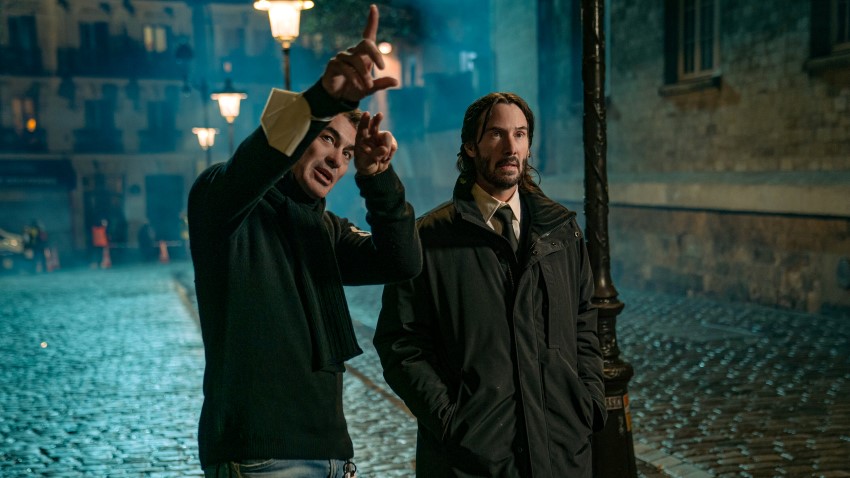
Interesting! Do you know how that was mic’d in production? I’m sure Keanu wasn’t wearing a lav as he was falling down those steps. So, were there multiple mics set up along the stairs to capture the sound of his descent?
MS: Honestly, I don’t remember, but he was probably not wearing a lav. And even if he was, I’m sure you couldn’t use it. But, I don’t know exactly how they mic’d some of that, but they did a great job.
I don’t know exactly how they mic’d some of that, but they did a great job.
I know camera-wise, when you see a sporting event and the camera is suspended across the stadium and it moves, that’s how they did a lot of the camera work. So there’s the potential to have a microphone as part of that. It was a quiet enough night and in an area reflective enough so that you can hear things fairly clearly, even if they were far away.
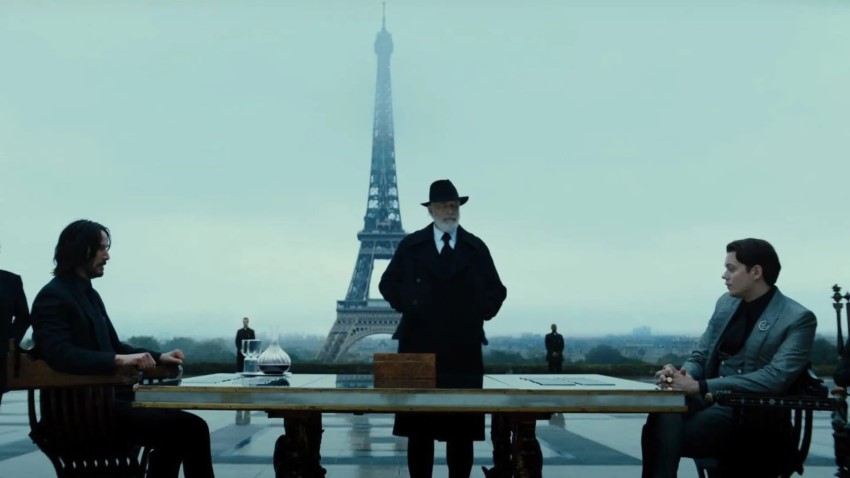
One last fight to talk about is the duel at the end. This is the culmination of the whole John Wick series. How did you approach that sound-wise, to help it feel as big and important as it is?
MS: John Wick is a Western. At certain times in other Wick movies, there’s always been an homage to that. So, in this movie, when talking about the guns, the whole idea was to make them almost sound like black powder pistols even though they’re not. We just give them a lot of echo, as you would have in a Western town. So that’s one aspect.
…I started putting in crows and wind gusts, to try to make it sound like a dusty, Western standoff.
Then, as we sat there in the final, I started putting in crows and wind gusts, to try to make it sound like a dusty, Western standoff.
AR: At one point, we were going to put in the quintessential squeaky bar door. Ultimately, we ruled against it because that was too on the nose. I tried to do it, but Mark wouldn’t let me.
MS: Well, we tried. Who knows? It might have ended up in the movie. But that’s the fun of a Wick film: we can be broad with reality if it makes sense in context.
One of the sound designers, Gael Nicolas, did those guns.
AR: One of the sound designers, Gael Nicolas, did those guns. Typically what happens is we’ll do a temp and if I’m working on another sequence, I won’t have time to address every weapon need. (I do go through and look at it all at some point, and address it so it’s how I would like it to sound and how Mark would like it to sound.) So for those particular shots, I didn’t really address them too much in that shot because they were so clean. It just worked perfectly. There wasn’t a whole lot for me to do on that shot. And Mark is right. The pistols sounded old because they looked old. Even though the mechanisms themselves were old, the actual bullets were fairly modern. It’s not a true black powder pistol, but Chad made it so the guns look old. So you get a little bit of both and it worked perfectly.
MS: You have to ignore reality and put long, old western movie bullet trails in there.
AR: And I thought the tension was really great as they took their steps. All you heard was a very simplistic sound of gravel footsteps. When they got to their pacing marks, it was just a little bit of footsteps on stone. It tended to feel a little bit more tension filled with just the footsteps being isolated all by themselves and a little bit of wispy wind in the trees. I thought it was very Western.
MS: Hats off to the foley team in this movie because there are more upfront foley footsteps than I’ve ever experienced in a film. We hear the sound of the footsteps and the sound of the reverb that they create in the space. It’s hugely important because John Wick is always walking somewhere and we travel with him visually. More often than not, we are hearing him walk.
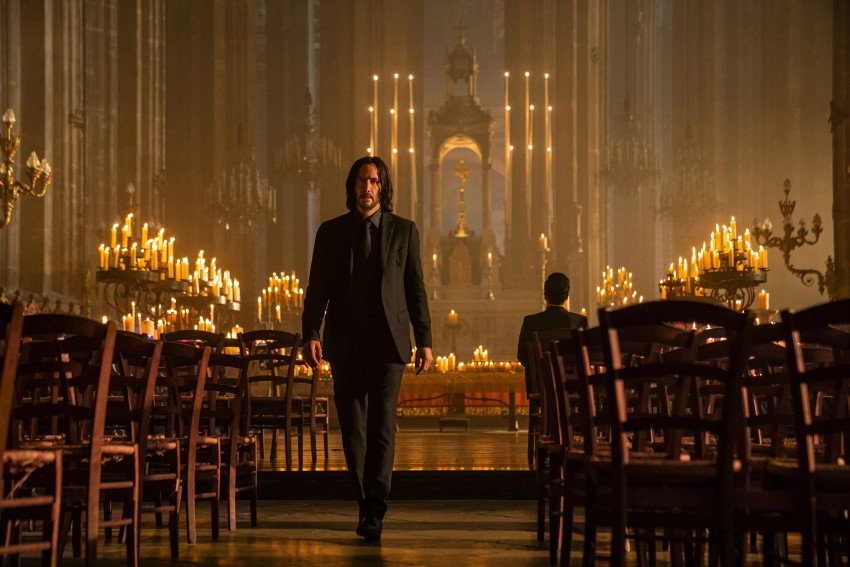
And what about Wick’s bulletproof suit? Was that something the foley team helped with? Or was that something you designed?
MS: I don’t know what the foley team did for the movement of his suit, but Alan created the bulletproofness of it.
AR: That’s gone through a few iterations from the first time you see it. Chad really wanted us to accent the bullets going into Kevlar. It’s a thumpy sound and it’s fabric-y. We did a couple of things; there’s a fabric-rip kind of sound. And we also did a metallic impact because those are the only things that would cut through. You have a gunshot and a bullet impact. You want the bullet impact to cut through the mix, but we didn’t want to feel like it went through his vest. We wanted to feel like it impacted his vest and just laid there.
You want the bullet impact to cut through the mix, but we didn’t want to feel like it went through his vest.
We would trade off so sometimes there’d be a rip element that stood out a little bit more. Then sometimes there’d be a metallic thunk element that stood out more. That ended up being a good combination, and we used it for this film, too. We just dressed them up just a little bit because you had the other armor, too.
All the assassins’ armor – the Japanese armor – was different. It was more plastic-y. So we came up with armor impacts for the helmet and armor impacts for the body. Those are two distinctly different things. The helmet ones always sounded like a motorcycle helmet or a football helmet being hit with something. But the body armor part of it was a little different. It was plastic-y, but it wasn’t helmet-y at all. Trying to create those elements was one of my tasks that Mark gave me.
…we came up with armor impacts for the helmet and armor impacts for the body. Those are two distinctly different things.
MS: That was a huge task and it’s huge to Chad, too, because all those sounds are part of his storytelling. These guys are getting shot yet they’re surviving. Those suits are real in real life; they do exist. The impact would knock you over, I would imagine, but nonetheless, the bullets don’t penetrate. He wants the audience to understand the armor is why they’re surviving, because they’re getting shot while wearing bullet-proof armor suits.
AR: John’s always going for the weak points, the necks, crotches, and hands that aren’t protected as much. It was tough because, in action movies, it’s usually the shot, and then the impact is literally milliseconds later. There’s no time to differentiate between the cause and result of the gunshot. We’ve talked quite a few times (Chad included) about whether they can increase the time between the shot and the impact by two or three frames.
We’ve talked quite a few times (Chad included) about whether they can increase the time between the shot and the impact by two or three frames.
It makes a huge difference. It’s one of those collaborative things. Mark has been able to get them to accept the fact that we need a little bit of separation if you want to really tell the sound moment, and most of the time, they’ll do it because they see the value in it.
MS: I think that’s important in order to get the end result that they’re looking for, to be able to tell that they’re shooting at something that resists the bullet or ricochets off. And the ricochet sound is a good trick because obviously if you hear one that means the bullet went somewhere.
We talked about comedic relief, and there’s that moment just before the duel when John takes off his suit jacket and a bunch of slugs fall out…
MS: Yeah that was great. The original sound from foley sounded like shell casings, which wasn’t quite right. So basically there are a lot of rock drops because that sort of emulates the sound of what bullets might sound like. So there are a couple of sound effects that had that quality, so that’s what was used.
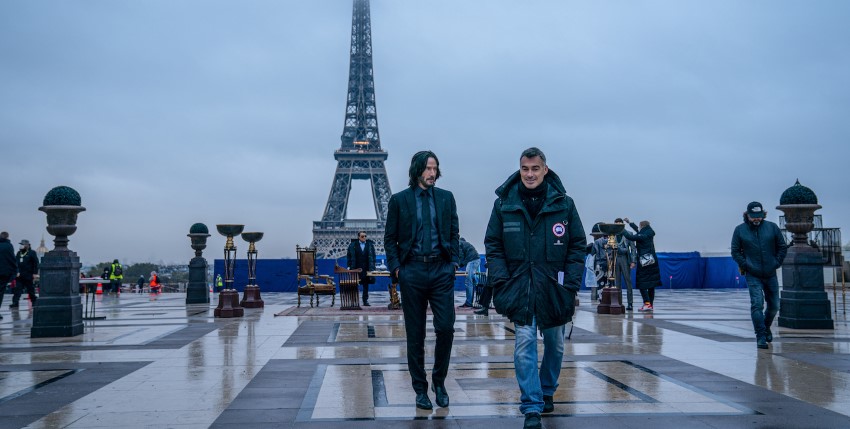
For the director to give you the space and time to let that sonic joke play out is really great…
MS: We have so much fun because there’s really latitude to do all of that.
We’re talking about the sounds that you’re noticing, but there are a lot of sounds that are world-building in John Wick that might go unnoticed but are a pretty important part of the palette of what’s going on, from non-literal tones or frequencies to clock ticks to things that are happening in the background and make things seem real.
Anytime there’s an opportunity to do something subjective in the film, whether it be a low tone or a sound to support the story, Chad is all for it. So that’s really nice to have.
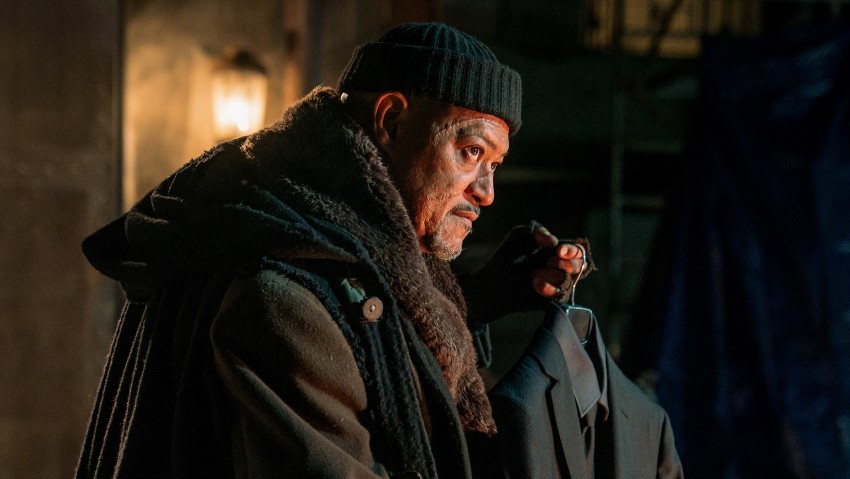
The film actually opens up with one of those moments. We see the Bowery King walking through the subway tunnels and it was very atmospheric, with nice low tones, and all the beautiful reverbs you hear from his feet in that space. It was really great…
MS: That was the first note that Chad gave to me, that he wanted to hear the spaces. We’re in a lot of big spaces in the film and he wanted to hear those big spaces. And he wanted them to be different. He said he wanted them to be full and rich and to have these big environments feel very unique. He likes reverb and he likes the spaces that they create.
And there are so many great spaces in this film. The Sacred Heart Church in Berlin, the Louvre Museum, the Palais Garnier, the Great Stables (Grande Écurie) at the Palace of Versailles… did they capture any IRs on location for you to use in post?
MS: No, they didn’t. But at the same time, it’s always interesting to play around with reverbs to come up with an acoustic sound for these spaces. The production design of the movie and the cinematography is off the charts.
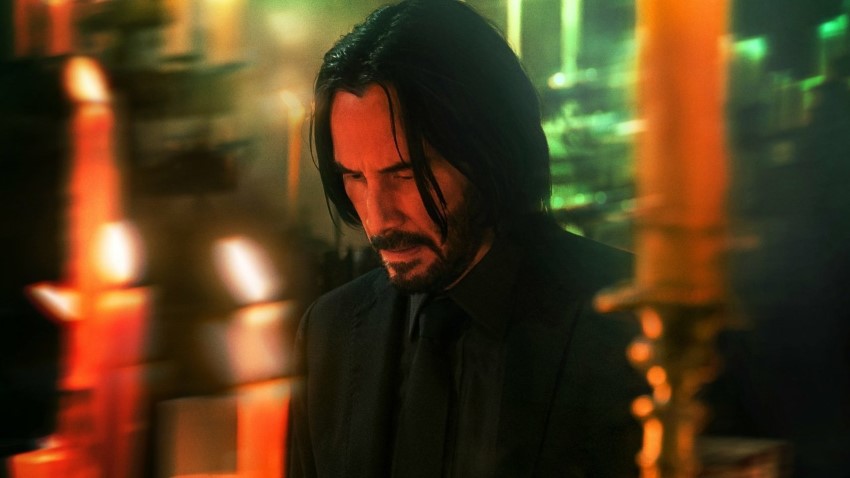
As we bid bon voyage to the Baba Yaga – this may be the last John Wick – what are you going to miss most about working on these films?
AR: I’m going to miss working with Chad and being a contributor to what makes this work. Usually, it’s not that specific, but with the John Wick films, I’ve been the gun/explosion/fight guy for the most part. So I get a good chance to really touch a lot of aspects of the film. Working with Chad and being able to work in the John Wick universe, in general, is what I’m going to miss more than anything. I’m not sure it’s the last one; we’ll have to see…
MS: The people are by far the best part and the fact that I get to work on something I’m a fanboy of myself. That doesn’t happen very often at all.
A big thanks to Mark Stoeckinger and Alan Rankin for giving us a behind-the-scenes look at the sound of John Wick and to Jennifer Walden for the interview!

